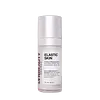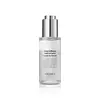What's inside
What's inside
 Key Ingredients
Key Ingredients

 Benefits
Benefits

 Concerns
Concerns

No concerns
 Ingredients Side-by-side
Ingredients Side-by-side

Water
Skin ConditioningButylene Glycol
HumectantGlycerin
HumectantCaprylic/Capric Triglyceride
MaskingSqualane
EmollientDiheptyl Succinate
EmollientPentylene Glycol
Skin Conditioning1,2-Hexanediol
Skin ConditioningHelianthus Annuus Seed Oil
EmollientDioscorea Villosa Root Extract
Skin ConditioningCopper Tripeptide-1
Skin ConditioningOligopeptide-1
Skin ConditioningNicotiana Benthamiana Hexapeptide-40 Sh-Polypeptide-76
Skin ConditioningNicotiana Benthamiana Hexapeptide-40 Sh-Polypeptide-47
Skin ConditioningAcetyl Sh-Hexapeptide-5 Amide Acetate
Skin ConditioningCeramide NP
Skin ConditioningNiacinamide
SmoothingCentella Asiatica Extract
CleansingBeta-Glucan
Skin ConditioningSodium Hyaluronate
HumectantHaematococcus Pluvialis Extract
AntioxidantSodium PCA
HumectantAnanas Sativus Fruit Extract
Skin ConditioningPanthenol
Skin ConditioningAllantoin
Skin ConditioningBetaine
HumectantBisabolol
MaskingZinc PCA
HumectantC12-20 Alkyl Glucoside
EmulsifyingC14-22 Alcohols
Emulsion StabilisingSodium Polyacrylate
AbsorbentCapryloyl Glycerin/Sebacic Acid Copolymer
Skin ConditioningCarbomer
Emulsion StabilisingSorbitan Olivate
EmulsifyingCellulose Gum
Emulsion StabilisingHydrogenated Lecithin
EmulsifyingCetearyl Olivate
Mannitol
HumectantPhosphatidylcholine
EmulsifyingCetyl Alcohol
EmollientDecyl Glucoside
CleansingDipotassium Phosphate
BufferingPropanediol
SolventSodium Chloride
MaskingSodium Hydroxide
BufferingSodium Phytate
Tocopherol
AntioxidantXanthan Gum
EmulsifyingPotassium Phosphate
BufferingPotassium Sorbate
PreservativeSodium Benzoate
MaskingPhenoxyethanol
PreservativeEthylhexylglycerin
Skin ConditioningHydroxyacetophenone
AntioxidantWater, Butylene Glycol, Glycerin, Caprylic/Capric Triglyceride, Squalane, Diheptyl Succinate, Pentylene Glycol, 1,2-Hexanediol, Helianthus Annuus Seed Oil, Dioscorea Villosa Root Extract, Copper Tripeptide-1, Oligopeptide-1, Nicotiana Benthamiana Hexapeptide-40 Sh-Polypeptide-76, Nicotiana Benthamiana Hexapeptide-40 Sh-Polypeptide-47, Acetyl Sh-Hexapeptide-5 Amide Acetate, Ceramide NP, Niacinamide, Centella Asiatica Extract, Beta-Glucan, Sodium Hyaluronate, Haematococcus Pluvialis Extract, Sodium PCA, Ananas Sativus Fruit Extract, Panthenol, Allantoin, Betaine, Bisabolol, Zinc PCA, C12-20 Alkyl Glucoside, C14-22 Alcohols, Sodium Polyacrylate, Capryloyl Glycerin/Sebacic Acid Copolymer, Carbomer, Sorbitan Olivate, Cellulose Gum, Hydrogenated Lecithin, Cetearyl Olivate, Mannitol, Phosphatidylcholine, Cetyl Alcohol, Decyl Glucoside, Dipotassium Phosphate, Propanediol, Sodium Chloride, Sodium Hydroxide, Sodium Phytate, Tocopherol, Xanthan Gum, Potassium Phosphate, Potassium Sorbate, Sodium Benzoate, Phenoxyethanol, Ethylhexylglycerin, Hydroxyacetophenone
Hydrolyzed Collagen Extract
Skin ProtectingGlycerin
HumectantPropanediol
SolventValine
MaskingHydrogenated Polyisobutene
EmollientNeopentyl Glycol Diheptanoate
EmollientLeucine
Skin ConditioningGlycereth-26
Humectant1,2-Hexanediol
Skin ConditioningDicaprylyl Carbonate
EmollientNiacinamide
SmoothingButylene Glycol
HumectantSoluble Collagen
HumectantHydrolyzed Collagen
EmollientWater
Skin ConditioningAtelocollagen
Skin ConditioningAdenosine
Skin ConditioningAnemarrhena Asphodeloides Root Extract
Skin ConditioningSerine
MaskingGlutamic Acid
HumectantProline
Skin ConditioningSodium Hyaluronate
HumectantAspartic Acid
MaskingAlanine
MaskingLysine
Skin ConditioningChondrus Crispus Extract
Skin ConditioningGlycine
BufferingArginine
MaskingTyrosine
MaskingPhenylalanine
MaskingThreonine
Isoleucine
Skin ConditioningTocopherol
AntioxidantHistidine
HumectantCysteine
AntioxidantMethionine
Skin ConditioningHydrolyzed Elastin
EmollientHyaluronic Acid
HumectantHydroxypropyltrimonium Hyaluronate
Sodium Acetate
BufferingCellulose
AbsorbentHydrolyzed Hyaluronic Acid
HumectantSodium Acetylated Hyaluronate
HumectantHydrolyzed Sodium Hyaluronate
Skin ConditioningSodium Hyaluronate Crosspolymer
HumectantPotassium Hyaluronate
Skin ConditioningEthylhexylglycerin
Skin ConditioningTrilaureth-4 Phosphate
EmulsifyingHydroxyethylcellulose
Emulsion StabilisingDisodium EDTA
Hydrolyzed Collagen Extract, Glycerin, Propanediol, Valine, Hydrogenated Polyisobutene, Neopentyl Glycol Diheptanoate, Leucine, Glycereth-26, 1,2-Hexanediol, Dicaprylyl Carbonate, Niacinamide, Butylene Glycol, Soluble Collagen, Hydrolyzed Collagen, Water, Atelocollagen, Adenosine, Anemarrhena Asphodeloides Root Extract, Serine, Glutamic Acid, Proline, Sodium Hyaluronate, Aspartic Acid, Alanine, Lysine, Chondrus Crispus Extract, Glycine, Arginine, Tyrosine, Phenylalanine, Threonine, Isoleucine, Tocopherol, Histidine, Cysteine, Methionine, Hydrolyzed Elastin, Hyaluronic Acid, Hydroxypropyltrimonium Hyaluronate, Sodium Acetate, Cellulose, Hydrolyzed Hyaluronic Acid, Sodium Acetylated Hyaluronate, Hydrolyzed Sodium Hyaluronate, Sodium Hyaluronate Crosspolymer, Potassium Hyaluronate, Ethylhexylglycerin, Trilaureth-4 Phosphate, Hydroxyethylcellulose, Disodium EDTA
 Reviews
Reviews

Ingredients Explained
These ingredients are found in both products.
Ingredients higher up in an ingredient list are typically present in a larger amount.
1,2-Hexanediol is a synthetic liquid and another multi-functional powerhouse.
It is a:
- Humectant, drawing moisture into the skin
- Emollient, helping to soften skin
- Solvent, dispersing and stabilizing formulas
- Preservative booster, enhancing the antimicrobial activity of other preservatives
Butylene Glycol (or BG) is used within cosmetic products for a few different reasons:
Overall, Butylene Glycol is a safe and well-rounded ingredient that works well with other ingredients.
Though this ingredient works well with most skin types, some people with sensitive skin may experience a reaction such as allergic rashes, closed comedones, or itchiness.
Learn more about Butylene GlycolEthylhexylglycerin (we can't pronounce this either) is commonly used as a preservative and skin softener. It is derived from glyceryl.
You might see Ethylhexylglycerin often paired with other preservatives such as phenoxyethanol. Ethylhexylglycerin has been found to increase the effectiveness of these other preservatives.
Glycerin is already naturally found in your skin. It helps moisturize and protect your skin.
A study from 2016 found glycerin to be more effective as a humectant than AHAs and hyaluronic acid.
As a humectant, it helps the skin stay hydrated by pulling moisture to your skin. The low molecular weight of glycerin allows it to pull moisture into the deeper layers of your skin.
Hydrated skin improves your skin barrier; Your skin barrier helps protect against irritants and bacteria.
Glycerin has also been found to have antimicrobial and antiviral properties. Due to these properties, glycerin is often used in wound and burn treatments.
In cosmetics, glycerin is usually derived from plants such as soybean or palm. However, it can also be sourced from animals, such as tallow or animal fat.
This ingredient is organic, colorless, odorless, and non-toxic.
Glycerin is the name for this ingredient in American English. British English uses Glycerol/Glycerine.
Learn more about GlycerinNiacinamide is a multitasking form of vitamin B3 that strengthens the skin barrier, reduces pores and dark spots, regulates oil, and improves signs of aging.
And the best part? It's gentle and well-tolerated by most skin types, including sensitive and reactive skin.
You might have heard of "niacin flush", or the reddening of skin that causes itchiness. Niacinamide has not been found to cause this.
In very rare cases, some individuals may not be able to tolerate niacinamide at all or experience an allergic reaction to it.
If you are experiencing flaking, irritation, and dryness with this ingredient, be sure to double check all your products as this ingredient can be found in all categories of skincare.
When incorporating niacinamide into your routine, look out for concentration amounts. Typically, 5% niacinamide provides benefits such as fading dark spots. However, if you have sensitive skin, it is better to begin with a smaller concentration.
When you apply niacinamide to your skin, your body converts it into nicotinamide adenine dinucleotide (NAD). NAD is an essential coenzyme that is already found in your cells as "fuel" and powers countless biological processes.
In your skin, NAD helps repair cell damage, produce new healthy cells, support collagen production, strengthen the skin barrier, and fight environmental stressors (like UV and pollution).
Our natural NAD levels start to decline with age, leading to slower skin repair, visible aging, and a weaker skin barrier. By providing your skin niacinamide, you're recharging your skin's NAD levels. This leads to stronger, healthier, and younger looking skin.
Another name for vitamin B3 is nicotinamide. This vitamin is water-soluble and our bodies don't store it. We obtain Vitamin B3 from either food or skincare. Meat, fish, wheat, yeast, and leafy greens contain vitamin B3.
The type of niacinamide used in skincare is synthetically created.
Learn more about NiacinamidePropanediol is an all-star ingredient. It softens, hydrates, and smooths the skin.
It’s often used to:
Propanediol is not likely to cause sensitivity and considered safe to use. It is derived from corn or petroleum with a clear color and no scent.
Learn more about PropanediolSodium Hyaluronate is hyaluronic acid's salt form. It is commonly derived from the sodium salt of hyaluronic acid.
Like hyaluronic acid, it is great at holding water and acts as a humectant. This makes it a great skin hydrating ingredient.
Sodium Hyaluronate is naturally occurring in our bodies and is mostly found in eye fluid and joints.
These are some other common types of Hyaluronic Acid:
Learn more about Sodium HyaluronateTocopherol (also known as Vitamin E) is a common antioxidant used to help protect the skin from free-radicals and strengthen the skin barrier. It's also fat soluble - this means our skin is great at absorbing it.
Vitamin E also helps keep your natural skin lipids healthy. Your lipid skin barrier naturally consists of lipids, ceramides, and fatty acids. Vitamin E offers extra protection for your skin’s lipid barrier, keeping your skin healthy and nourished.
Another benefit is a bit of UV protection. Vitamin E helps reduce the damage caused by UVB rays. (It should not replace your sunscreen). Combining it with Vitamin C can decrease sunburned cells and hyperpigmentation after UV exposure.
You might have noticed Vitamin E + C often paired together. This is because it is great at stabilizing Vitamin C. Using the two together helps increase the effectiveness of both ingredients.
There are often claims that Vitamin E can reduce/prevent scarring, but these claims haven't been confirmed by scientific research.
Learn more about TocopherolWater. It's the most common cosmetic ingredient of all. You'll usually see it at the top of ingredient lists, meaning that it makes up the largest part of the product.
So why is it so popular? Water most often acts as a solvent - this means that it helps dissolve other ingredients into the formulation.
You'll also recognize water as that liquid we all need to stay alive. If you see this, drink a glass of water. Stay hydrated!
Learn more about Water